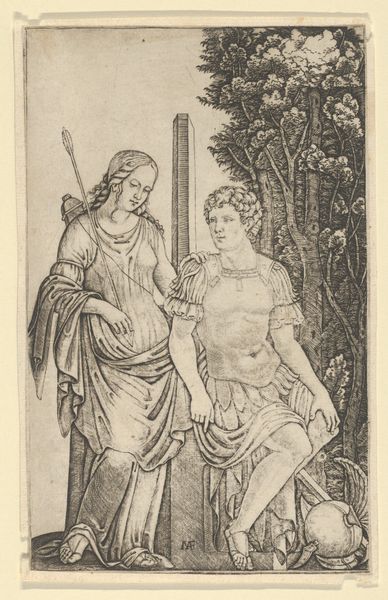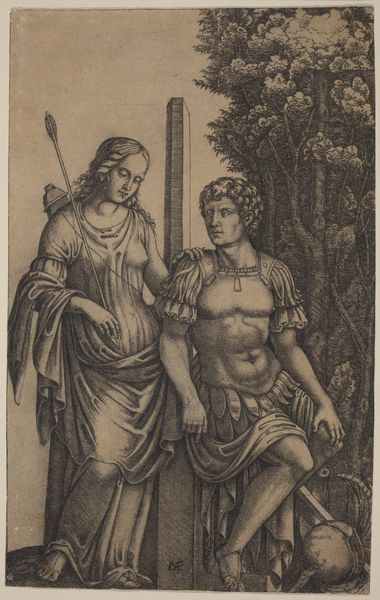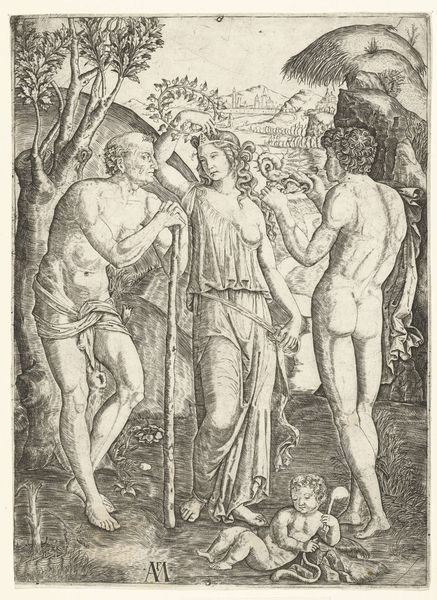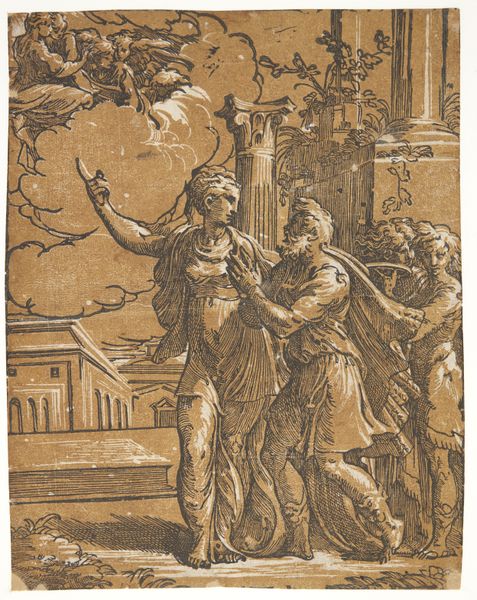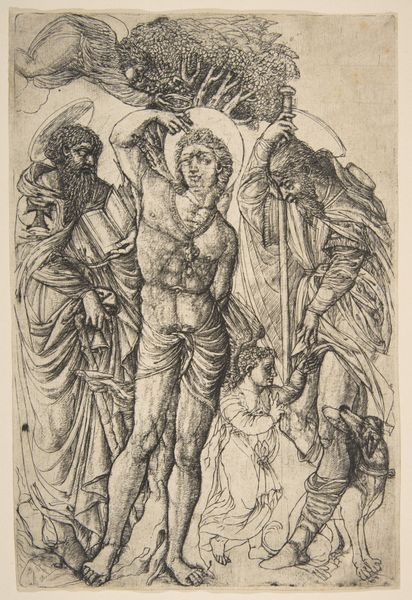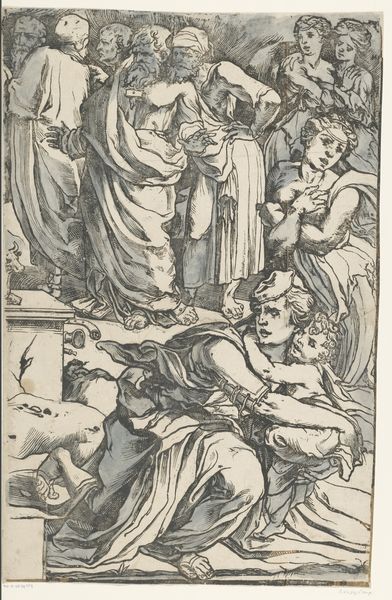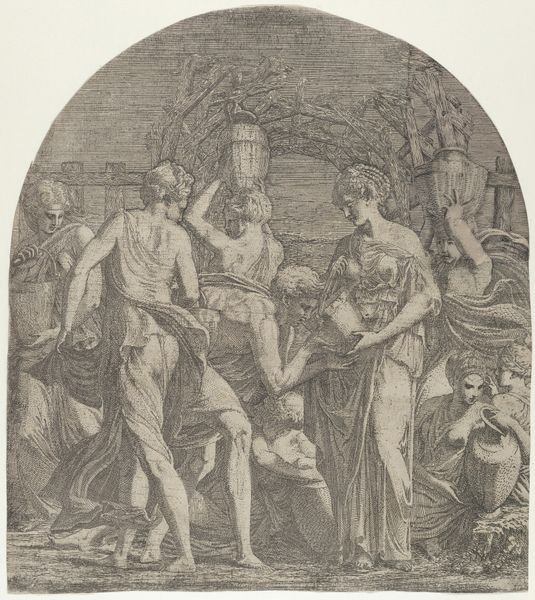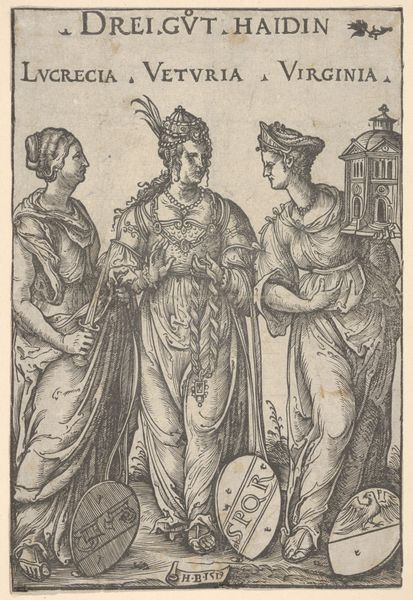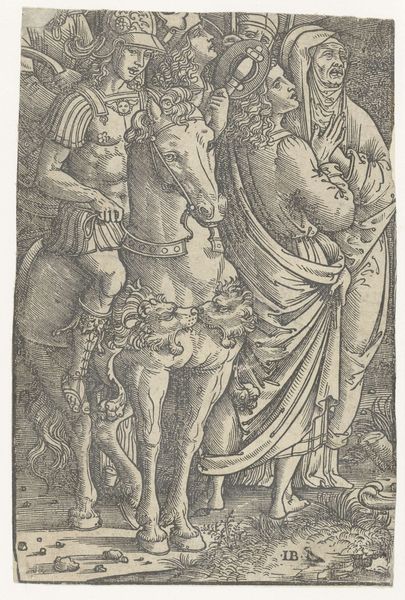
drawing, print, engraving
#
drawing
#
pen drawing
# print
#
figuration
#
line
#
history-painting
#
italian-renaissance
#
engraving
Dimensions: 5 1/16 x 3 7/8in. (12.9 x 9.8cm)
Copyright: Public Domain
Curator: Here we have Marcantonio Raimondi's engraving, "Orpheus and Eurydice," likely created between 1495 and 1511. The print depicts the climactic moment of their tale, when Orpheus leads Eurydice from the Underworld. Editor: The piece strikes me as forlorn, like a memory fading at the edges. The meticulous line work creates this delicate, almost ethereal feel, despite the grim subject matter. It's less about passion, and more about the hollow ache of what's been lost. Curator: Exactly. Consider that Raimondi lived in a time that valued classical themes, where the myths provided moral lessons, but the image’s creation would have been deeply influenced by a printing revolution, and would be consumed in domestic settings, unlike large-scale works by, say, Raphael, who was an important influence to him. Editor: It's interesting how they’re posed. He with his peculiar string instrument—some Renaissance notion of a lyre perhaps—leading a figure who looks less like she's being saved and more like she's sleepwalking back to oblivion. There's a passivity there. She is without volition. Curator: It's crucial to recall the context, where art often reinforced specific roles—here, highlighting female dependence and the cost of disobedience; remember that Orpheus broke the condition placed upon his return and doomed her to return. I feel her hesitation comes across here. Editor: Hesitation, yes. I'm curious about how it functions as an engraving. Are we supposed to appreciate its fineness and the mastery of that particular artistic endeavor? To me, I can see past the fine details of its lines and appreciate more the tragic inevitability the scene represents, in life as much as myth. A warning for artists perhaps? The limits of our vision and creative impulses? Curator: Precisely! Art history delves into how imagery functions to subtly affirm broader cultural expectations or norms. In this print, that marital bond and Orpheus' gaze literally holds the key to life and death! Editor: I am not sure he can deliver with this… thing. But on a sadder note, I see both Orpheus and Eurydice standing at life’s threshold. And it seems clear to me that she’s not really with us at all. Curator: Thank you for highlighting your interesting take, which perhaps explains some of its long appeal for later generations as well. Editor: Well, that’s the real trick isn’t it? Trying to work it out.
Comments
No comments
Be the first to comment and join the conversation on the ultimate creative platform.
